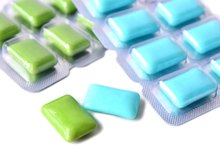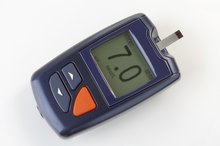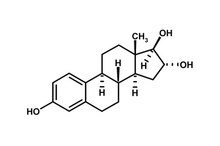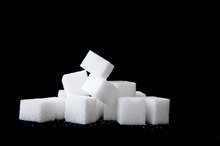What does fact checked mean?
At Healthfully, we strive to deliver objective content that is accurate and up-to-date. Our team periodically reviews articles in order to ensure content quality. The sources cited below consist of evidence from peer-reviewed journals, prominent medical organizations, academic associations, and government data.
- Journal of Pharmacology and Pharmacotherapeutics: Sugar Substitutes: Health Controversy Over Perceived Benefits
- Journal of Pharmacology and Pharmacotherapeutics: Sugar Substitutes: Health Controversy Over Perceived Benefits
The information contained on this site is for informational purposes only, and should not be used as a substitute for the advice of a professional health care provider. Please check with the appropriate physician regarding health questions and concerns. Although we strive to deliver accurate and up-to-date information, no guarantee to that effect is made.
Sorbitol Vs. Mannitol
The term sugar alcohol does not truly fit sorbitol and mannitol: neither is as sweet as sugar and neither will get you drunk. These two, nearly identical twin sugar substitutes are close enough to sugar, however, to allow you to satisfy your sweet tooth without rotting it away. Both can be part of a low-sugar, low-calorie diet for diabetics and weight watchers. If you are a diabetic, consult your physician about the best way to use sweeteners like sorbitol and mannitol to keep your blood sugar under control.
Chemistry
Sorbitol and mannitol are isomers: substances that have the same chemical formula and molecular weight, but may differ in chemical properties and physical structure. Both sugar alcohol molecules consist of six carbon, 14 hydrogen and six oxygen atoms. Both have the same molecular weight of 182.17176 g/mol. If you compared a model of the molecular structure of sorbital to that of mannitol, the two would be identical -- except one hydrogen atom on mannitol would be pointed in a different direction in space.
There are some differences, however, in chemical properties of the two. Mannitol has a melting point of 327 to 336 degrees Fahrenheit, whereas sorbitol will melt at between 201 to 208 degrees Fahrenheit. In pure form, both are white, odorless powders, but mannitol sometimes forms granules. Sorbitol is a slightly more dense molecule than mannitol. Mannitol's appearance and less pronounced taste makes it a popular diluting agent for illegal drugs such as cocaine.
- Sorbitol and mannitol are isomers: substances that have the same chemical formula and molecular weight, but may differ in chemical properties and physical structure.
Occurence in Nature
Xylitol Nutrition Information
Learn More
Both sorbitol and mannitol are naturally occurring chemical compounds in plants, algae and bacteria. Both are derived from the sugar fructose. Sorbitol is frequently found in fruits like apples, pears and prunes. The leaves of the flowering ash tree and several members of the olive family exude mannitol from their leaves: in fact, mannitol derives its name from this similarity to the Biblical Manna from heaven.
- Both sorbitol and mannitol are naturally occurring chemical compounds in plants, algae and bacteria.
- The leaves of the flowering ash tree and several members of the olive family exude mannitol from their leaves: in fact, mannitol derives its name from this similarity to the Biblical Manna from heaven.
Comparison to Sugar
Mannitol is about half as sweet as sugar: sorbitol is about 60 percent as sweet. As a group, sugar alcohols are not as well absorbed into the body and converted into glucose and caloric energy as sugar is. Mannitol has 1.6 calories per gram and sorbitol has 2.6 calories per gram. In comparison, sugar has 4 calories per gram. Like sugar, sorbitol can be used in baked goods. Mannitol, on the other hand, is often used to dust hard candy, dried fruit and chewing gum in much the same way you would use powdered sugar.
- Mannitol is about half as sweet as sugar: sorbitol is about 60 percent as sweet.
- Mannitol has 1.6 calories per gram and sorbitol has 2.6 calories per gram.
Benefits and Risks
Is Lactose an Aldose?
Learn More
Both sorbitol and mannitol can be safe sugar substitutes for diabetics. Neither causes the rise in blood glucose seen with sugar. Neither are digested by bacteria in the mouth to form tooth enamel-destroying acids.
Too much sorbitol or mannitol, however, may cause diarrhea. More sorbitol is absorbed from your intestine that mannitol, but the unabsorbed residual of either sugar alcohol is digested by bacteria in your intestine. This fermentation action by bacteria may produce intestinal gas, abdominal bloating and loose stools. The US 1. Food and Drug Administration requires manufacturers of foods containing sorbitol to include a laxative effect warning on their labels.
- Both sorbitol and mannitol can be safe sugar substitutes for diabetics.
- More sorbitol is absorbed from your intestine that mannitol, but the unabsorbed residual of either sugar alcohol is digested by bacteria in your intestine.
Related Articles
References
- "Duke's Handbook of Medicinal Plants of the Bible"; James A. Duke; December 26, 2007
- Journal of Pharmacology and Pharmacotherapeutics: Sugar Substitutes: Health Controversy Over Perceived Benefits
- Understanding Food; Amy C. Brown
- Bodner Research Web: Isomers
- ChemicalBook: D-Sorbitol(50-70-4)
- ChemicalBook: D-Mannitol(69-65-8)
- Sorbitol
- Sorbitol | C6H14O6 - PubChem
- Carbohydrate malabsorption in patients with non-specific abdominal complaints
- Sorbitol
- Sugar Substitutes: Mechanism, Availability, Current Use and Safety Concerns-An Update
- The use of sorbitol- and xylitol-sweetened chewing gum in caries control - PubMed
- CFR - Code of Federal Regulations Title 21
- Sorbitol-based osmotic diarrhea: Possible causes and mechanism of prevention investigated in rats
- Effects of olestra and sorbitol consumption on objective measures of diarrhea: impact of stool viscosity on common gastrointestinal symptoms - PubMed
- Medical Management of Constipation
- Sorbitol | C6H14O6 - PubChem
- Effects of Sweeteners on the Gut Microbiota: A Review of Experimental Studies and Clinical Trials
- Sorbitol
- Effects of Sweeteners on the Gut Microbiota: A Review of Experimental Studies and Clinical Trials
- CFR - Code of Federal Regulations Title 21
- Sorbitol-based osmotic diarrhea: Possible causes and mechanism of prevention investigated in rats
- Effects of Sweeteners on the Gut Microbiota: A Review of Experimental Studies and Clinical Trials
- Sodium Polystyrene Sulfonate Suspension, USP Sorbitol Free Rx Only
- Sugar substitutes during pregnancy
- A Systematic Review of the Effects of Polyols on Gastrointestinal Health and Irritable Bowel Syndrome
- Low-FODMAP Diet for Treatment of Irritable Bowel Syndrome
- Artificial sweeteners – a review
- Medical Management of Constipation
- FoodData Central
- FoodData Central
- Effects of an exopolysaccharide (kefiran) on lipids, blood pressure, blood glucose, and constipation - PubMed
- The effect of probiotics on functional constipation in adults: a systematic review and meta-analysis of randomized controlled trials - PubMed
- Castor oil induces laxation and uterus contraction via ricinoleic acid activating prostaglandin EP3 receptors
- Diets for Constipation
- Butyric acid in functional constipation
- Are Senna based laxatives safe when used as long term treatment for constipation in children? - PubMed
- Evaluation of the Nutritional and Metabolic Effects of Aloe vera - Herbal Medicine - NCBI Bookshelf
- Beneficial health properties of psyllium and approaches to improve its functionalities - PubMed
Writer Bio
Allen Bethea has written articles on programming, web design,operating systems and computer hardware since 2002. He holds a Bachelor of Science from UNC-Chapel Hill and AAS degrees in office technology, mechanical engineering/drafting and internet technology. Allen has extensive experience with desktop and system software for both Windows and Linux operating systems.









